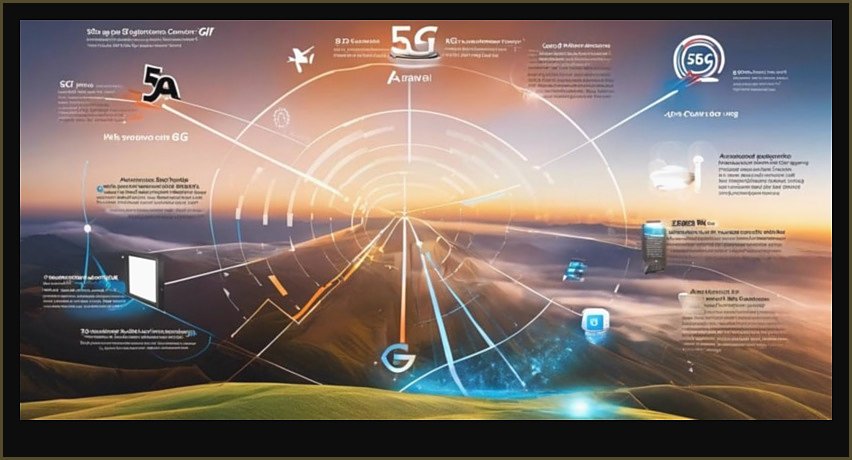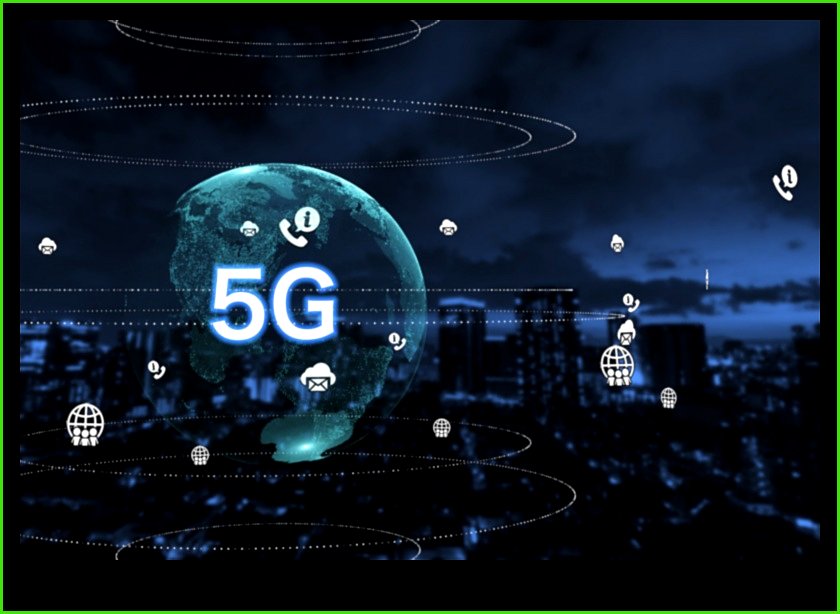
5G Pioneers: Shaping the Future of Visual Arts and Connected Solutions
I. Introduction
II. 5G and the Visual Arts
III. Connected Solutions for the Visual Arts
IV. Benefits of 5G for the Visual Arts
V. Challenges of 5G for the Visual Arts
VI. How to Use 5G in the Visual Arts
VII. Case Studies of 5G in the Visual Arts
VIII. The Future of 5G in the Visual Arts
IX. Conclusion
X. FAQ
| Topic | Answer |
|---|---|
| 5G Pioneers | People who are using 5G technology to create new and innovative visual art experiences. |
| Visual Arts | The use of 5G technology to create new and innovative ways to experience art. |
| Connected Solutions | The use of 5G technology to create new and innovative ways to connect people and devices. |
| Future | The potential of 5G technology to revolutionize the way we create, experience, and connect with art. |

II. 5G and the Visual Arts
5G is a new wireless technology that offers significantly faster speeds and lower latency than previous generations of wireless technology. This makes it ideal for applications that require real-time data transmission, such as the visual arts.
Here are some of the ways that 5G can be used to enhance the visual arts:
- 5G can be used to create immersive virtual reality experiences that allow users to interact with digital art in a realistic way.
- 5G can be used to stream high-quality video content to mobile devices, allowing users to watch art exhibitions and performances from anywhere in the world.
- 5G can be used to power real-time collaboration tools that allow artists to work together on projects from anywhere in the world.
- 5G can be used to create smart cities that are more connected and efficient.
5G is still a relatively new technology, but it has the potential to revolutionize the way we experience the visual arts. By providing faster speeds and lower latency, 5G can make it possible to create more immersive and interactive art experiences that are more accessible to people from all over the world.
III. Connected Solutions for the Visual Arts
Connected solutions are a key enabler of the future of visual arts. They provide the infrastructure and tools that artists need to create new and innovative experiences for their audiences. Some of the key benefits of connected solutions for the visual arts include:
- Enhanced collaboration: Connected solutions allow artists to collaborate with each other from anywhere in the world. This can lead to new and innovative artistic collaborations that would not be possible without these technologies.
- Improved accessibility: Connected solutions make it possible for people to experience visual art in new and innovative ways. For example, people who are unable to visit a physical art gallery can now experience the art virtually through 3D renderings and other digital technologies.
- Increased engagement: Connected solutions can help to engage audiences with visual art in new and exciting ways. For example, artists can use interactive technologies to allow audiences to interact with their work in real time.
Connected solutions are still in their early stages of development, but they have the potential to revolutionize the way we experience visual art. As these technologies continue to evolve, we can expect to see even more innovative and creative ways to use them in the visual arts.

IV. Benefits of 5G for the Visual Arts
5G offers a number of benefits for the visual arts, including:
- Increased speed: 5G can provide much faster data speeds than previous generations of wireless technology, which will allow for more immersive and interactive visual art experiences.
- Lower latency: 5G also has lower latency than previous generations of wireless technology, which will make it possible to create more realistic and responsive visual art experiences.
- Greater bandwidth: 5G offers greater bandwidth than previous generations of wireless technology, which will allow for more data to be transferred at once. This will make it possible to create more complex and detailed visual art experiences.
- Improved reliability: 5G is more reliable than previous generations of wireless technology, which will make it less likely for visual art experiences to be interrupted.
These benefits of 5G will allow visual artists to create new and innovative experiences that were not possible with previous generations of wireless technology. For example, 5G could be used to create immersive virtual reality experiences, interactive installations, and real-time streaming of high-definition video.

V. Challenges of 5G for the Visual Arts
5G has the potential to revolutionize the visual arts, but there are also a number of challenges that need to be overcome in order for this technology to reach its full potential.
Some of the challenges of 5G for the visual arts include:
- Cost: 5G is a relatively new technology and is still in its early stages of development. This means that it can be expensive to implement, which could make it difficult for smaller organizations and artists to adopt.
- Complexity: 5G is a complex technology that requires a high level of expertise to implement and manage. This could make it difficult for organizations and artists who do not have the necessary skills to use 5G effectively.
- Security: 5G networks are more vulnerable to security threats than traditional networks. This is because 5G networks use a wider range of frequencies, which makes them more susceptible to hacking and other attacks.
- Latency: 5G networks can experience latency, which is the delay between when a data packet is sent and when it is received. This latency can be a problem for visual arts applications that require real-time data, such as augmented reality and virtual reality.
Despite these challenges, 5G has the potential to revolutionize the visual arts by enabling new and innovative ways to create and experience art. By overcoming the challenges of 5G, artists and organizations can unlock the full potential of this technology and create truly immersive and interactive visual art experiences.
6. FAQ
Q: What are the benefits of using 5G for the visual arts?
A: 5G offers a number of benefits for the visual arts, including:
* Increased speed: 5G offers much faster speeds than previous generations of wireless technology, which can allow for the creation of more immersive and realistic visual art experiences.
* Lower latency: 5G also has lower latency than previous generations of wireless technology, which means that there is less delay between the time that a user interacts with a visual art piece and the time that the piece responds. This can make for a more seamless and interactive experience.
* Increased capacity: 5G networks have a much higher capacity than previous generations of wireless technology, which means that they can support more devices and users simultaneously. This can be important for visual art installations that are shared by multiple people or that are located in areas with a high concentration of people.
* Improved security: 5G networks are also more secure than previous generations of wireless technology, which can help to protect visual art pieces from unauthorized access or modification.
Q: What are the challenges of using 5G for the visual arts?
A: There are a few challenges to using 5G for the visual arts, including:
* Cost: 5G networks are still relatively new and expensive, which can make them prohibitively expensive for some visual artists.
* Complexity: 5G networks are more complex than previous generations of wireless technology, which can make them difficult to use for some visual artists.
* Bandwidth: 5G networks can be congested in some areas, which can lead to decreased performance and latency.
Q: How can visual artists use 5G to create new and innovative experiences?
A: 5G offers a number of opportunities for visual artists to create new and innovative experiences, including:
* Creating immersive and realistic virtual reality experiences
* Developing interactive art installations that respond to the user’s input
* Creating real-time collaborative art projects that allow multiple artists to work together on the same piece of art
* Using 5G to connect to sensors and other devices in the environment to create interactive art experiences that respond to the user’s surroundings
Q: What are some examples of 5G being used in the visual arts?
A: There are a number of examples of 5G being used in the visual arts, including:
* The Museum of Modern Art in New York City has created a 5G-powered virtual reality experience that allows users to explore the museum’s collection from anywhere in the world.
* The Tate Modern in London has created a 5G-powered art installation that allows users to interact with a digital sculpture by the artist Olafur Eliasson.
* The National Gallery of Australia has created a 5G-powered augmented reality tour that allows users to learn about the museum’s collection in a new and immersive way.
Q: What is the future of 5G in the visual arts?
The future of 5G in the visual arts is very promising. As 5G networks become more widespread and affordable, visual artists will have more opportunities to use 5G to create new and innovative experiences. 5G will also enable new forms of collaboration and communication between visual artists, and it will allow visual artists to connect to sensors and other devices in the environment to create more interactive and immersive experiences.

VII. The Future of 5G in the Visual Arts
The future of 5G in the visual arts is full of potential. With its high speeds, low latency, and massive capacity, 5G can enable new and innovative ways for artists to create and share their work.
Here are some of the ways that 5G is expected to impact the visual arts in the future:
- 5G will enable artists to create more immersive and realistic experiences for their viewers.
- 5G will make it possible for artists to collaborate with each other in real time, regardless of their location.
- 5G will allow artists to access and process massive amounts of data, which can be used to create new and innovative works of art.
- 5G will make it possible for artists to connect with their audiences in new and exciting ways.
5G is still a relatively new technology, but it is already having a significant impact on the visual arts. As 5G continues to develop, it is likely to have an even greater impact on this field in the years to come.
The Future of 5G in the Visual Arts
5G is still a relatively new technology, but it has the potential to revolutionize the way we create and experience visual art. Here are some of the ways that 5G could shape the future of the visual arts:
- 5G will enable real-time collaboration between artists from all over the world.
- 5G will allow artists to create immersive experiences that are impossible with traditional technologies.
- 5G will make it easier for artists to share their work with the world.
- 5G will open up new opportunities for artists to experiment with new forms of expression.
5G is still in its early stages, but it has the potential to have a profound impact on the visual arts. By providing artists with new tools and capabilities, 5G will help them create more innovative and immersive works of art that will reach a wider audience than ever before.
5G is a powerful technology that has the potential to revolutionize the visual arts and connected solutions. By providing faster speeds, lower latency, and greater capacity, 5G can enable new and innovative ways to create and experience visual art. It can also be used to develop new connected solutions that can improve the way we live and work.
As 5G continues to evolve, we can expect to see even more exciting and groundbreaking applications for this technology in the visual arts and connected solutions.
X. FAQ
Q: What is 5G?
A: 5G is the fifth generation of wireless technology, and it promises to deliver much faster speeds, lower latency, and greater capacity than previous generations of wireless technology.
Q: How can 5G be used in the visual arts?
A: 5G can be used in the visual arts to create new and innovative experiences for artists and audiences. For example, 5G could be used to power immersive virtual reality experiences, or to create real-time interactive art installations.
Q: What are the challenges of using 5G in the visual arts?
A: There are a number of challenges to using 5G in the visual arts, including the cost of 5G equipment, the complexity of 5G networks, and the need for specialized skills to work with 5G technology.